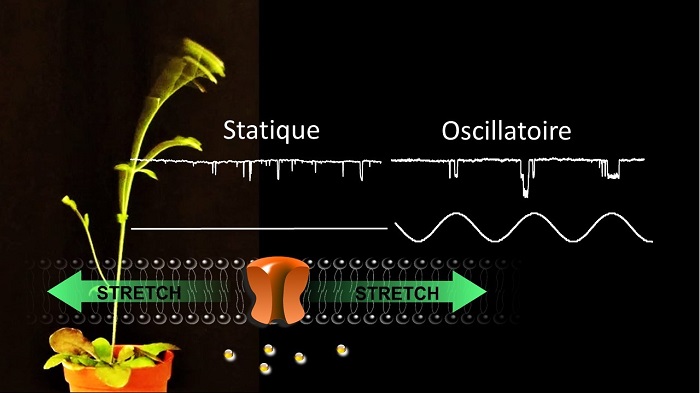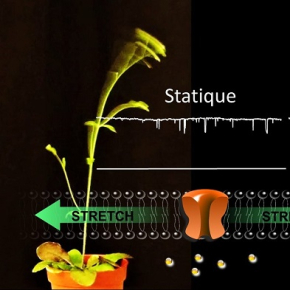
In plants, channels set the rhythm
Although plants are anchored to the ground, they spend most of their lifetime swinging in the wind. Like animals, plants have ‘molecular switches’ on the surface of their cells that transduce a mechanical signal into an electrical one in milliseconds. In animals, sound vibrations activate ‘molecular switches’ located in the ear. Scientists from the CNRS, INRAE, Ecole Polytechnique, Université Paris-Saclay and Université Clermont-Auvergne1 have found that in plants, rapid oscillations of stems and leaves due to wind may activate these ‘switches’ very effectively. They could allow plants to ‘listen’ to the wind. This is a key advantage in preparing them for storms, by modulating their growth. This work was published in PNAS on December 28, 2020.
Contact CNRS press office for videos of the phenomenon: presse@cnrs.fr

© Jean-Marie Frachisse and Daniel Tran, Institut de Biologie Integrative de la Cellule (CNRS/Université Paris-Saclay).
- 1At the Institut de Biologie Intégrative de la Cellule (CNRS/Université Paris-Saclay), the Laboratoire d'Hydrodynamique (CNRS/Ecole Polytechnique), the Laboratoire de Mécanique des Solides (CNRS/Ecole Polytechnique) and the Laboratoire Physique et Physiologie Intégrative de l'Arbre en Environnement Fluctuant (INRAE/Université Clermont Auvergne).
Cellular transduction of mechanical oscillations in plants by the plasma-membrane mechanosensitive channel MSL10. Daniel Tran, Tiffanie Girault, Marjorie Guichard, Sébastien Thomine, Nathalie Leblanc-Fournier, Bruno Moulia, Emmanuel de Langre, Jean-Marc Allain, Jean-Marie Frachisse. PNAS, 28 December 2020. DOI: 10.1073/pnas.1919402118


